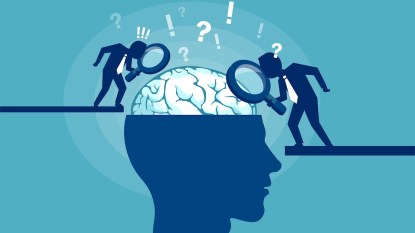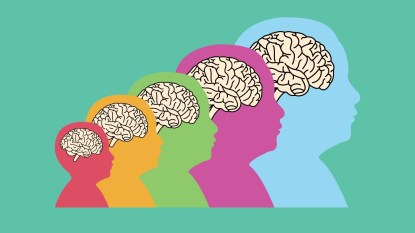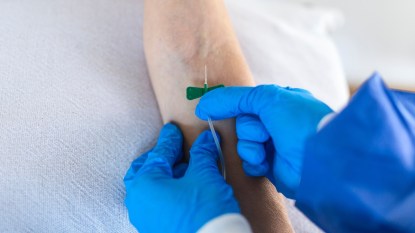Alzheimer’s Diagnoses Are Increasing — This Data on AD and Dementia Should Alarm Us All
What you need to know.

The statistics surrounding Alzheimer’s illustrates the need for more research into treatment and a cure. Every year, 9.8 million new cases of dementia, including Alzheimer’s Disease, are diagnosed by doctor’s around the world. That’s one new diagnosed case every 3.2 seconds. Dementia and Alzheimer’s Disease look different from person to person and progress at varying rates.
According to the Alzheimer’s Association, a person with early-stage Alzheimer’s is typically able to go about their normal life, but may begin experiencing difficulties like forgetting names, misplacing things, and having trouble staying organized. With middle-stage Alzheimer’s, the longest stage of the disease, symptoms progress past mild forgetfulness. People may have a hard time remembering key facts about their life, struggle to keep track of time, or demonstrate changes in personality. Late-stage Alzheimer’s is the most severe. People who are suffering from it require full-time care as they’ve lost many basic abilities such as walking, communicating, or swallowing.
The caregivers are majority women.
The role of a caregiver, in many cases, falls to a family member of the person with dementia or Alzheimer’s Disease. Women make up 66 percent of caregivers, and 33 percent of caregivers are the daughters of the person being cared for. Additionally, thirty percent of caretakers are 65 or older. The responsibility of caring for someone with dementia or Alzheimer’s is mentally, physically, and emotionally taxing. Watching someone you love become someone you don’t recognize is painful and hard to cope with. On top of that, many caregivers have families of their own to care for as well. Twenty-five percent of caregivers not only care for an aging parent, but also have children under 18-years-old. The Alzheimer’s Association provides resources on their website that encourage caregiver health and wellness to avoid burnout and ensure they’re taking care of themselves as well.
Costs of caring for Alzheimer’s patients are high.
In the United States, the cost to care for those with Alzheimer’s by 2050 is estimated to be $1.2 trillion. This rise includes more-than-fourfold increases both in government spending, under Medicare and Medicaid, and in out-of-pocket spending. In 2019, the cost to care for those with Alzheimer’s in the US was $290 billion.
Of dementia patients, Alzheimer’s is the most common disease.
Of the dementia patients around the world, 60 to 70 percent of them have Alzheimer’s, which is the most common form. Americans with Alzheimer’s and other forms of dementia spend twice as much time in the hospital each year, compared to other elderly patients who do not have the disease. According to John’s Hopkin’s Medicine, those with severe, late stage Alzheimer’s have a greater chance of contracting infections, especially pneumonia.
Alzheimer’s diagnoses are increasing at alarming rates.
Alzheimer’s is the seventh leading cause of death in the US according to the CDC. Between 2000 and 2019, there was a 145 percent increase in deaths caused by Alzheimer’s in the United States. Sixty-one percent of 70-year-olds with Alzheimer’s will die before they are 80 — a rate twice as high as for those without the disease. One in three seniors die with Alzheimer’s or another form of dementia. Research into new treatments and potential cures is being done everyday. Whether you’re a caretaker or suffering from the disease yourself, you aren’t alone.
A version of this article appeared in our partner magazine Alzheimer’s: New Hope For A Cure.













